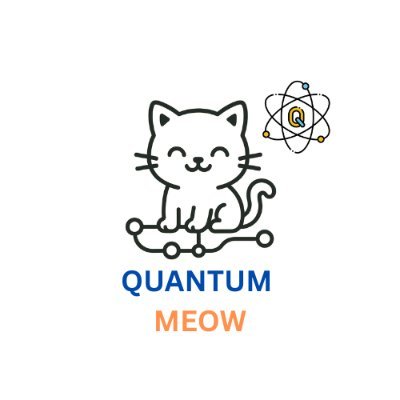Precio de APENFT
en EURSobre APENFT
Aviso
OKX no proporciona recomendaciones de inversión o de activos. Debes considerar cuidadosamente si el trading o el holding de activos digitales es adecuado para ti a la luz de tu situación financiera. Consulta a tu asesor legal/fiscal/profesional de inversiones para preguntas sobre tus circunstancias específicas. Para obtener más información, consulta nuestros Términos de uso y Advertencia de riesgo Al usar el sitio web de terceros ("Sitio web de terceros" o "TWP"), aceptas que el uso del TWP estará sujeto a los términos de TWP. Salvo que se indique expresamente por escrito, OKX y sus afiliados ("OKX") no están asociados de ninguna manera con el propietario u operador del TPW. Aceptas que OKX no es responsable de ninguna pérdida, daño ni cualquier otra consecuencia generada por tu uso del TPW. Ten en cuenta que usar un TWP puede generar una pérdida o reducción de tus activos. El producto puede no estar disponible en todas las jurisdicciones.
Rendimiento del precio de APENFT
APENFT en las redes sociales
Guía

Crea una cuenta de OKX gratis.
Añade fondos a tu cuenta.
Elige tus criptos.
Preguntas frecuentes sobre APENFT
APENFT mintea obras de arte como tokens ERC-721/TRC-721 on-chain. Estos tokens se almacenan en los contratos inteligentes ERC-20/TRC-20 de los tokens NFT y los derechos de las obras de arte subyacentes pertenecerán a los holders de NFT.
Los datos contenidos en los tokens NFT ERC-721/TRC-721 minteados, junto con los registros de las obras de arte subyacentes son almacenados de forma permanente en el sistema de archivos de BitTorrent, mientras que los archivos se almacenan en Internet.
Puedes comprar tokens NFT fácilmente en la plataforma de criptomoneda de OKX. Uno de los pares de trading disponibles en el terminal de trading en spot de OKX es NFT/USDT.
También puede comprar ANT con más de 99 monedas fiat seleccionando la opción "Compra Express". También están disponibles otros tokens cripto populares, como XRP (XRP), Cardano (ADA), Tether (USDT) y USD Coin (USDC).
Haz swap de las criptomonedas que ya tengas, incluidas Polkadot (DOT), Shiba Inu (SHIB), Solana ( SOL) y Chainlink (LINK), para NFT sin comisiones ni slippage de precio mediante el uso de OKX Convert.
Para ver los precios de conversión en tiempo real entre monedas fiat, como USD, EUR, GBP y más en NFT, visita la Calculadora de conversión de criptos de OKX. El exchange de cripto de alta liquidez de OKX garantiza los mejores precios para tus compras de criptos.
Descubre más sobre APENFT
APENFT es una plataforma basada en TRON que permite a los artistas de primera clase convertir sus creaciones entokens no fungibles (NFT)dentro de unos pocos clics. El proyecto invierte en las principales plataformas y obras de arte de NFT, incuba a artistas líderes y organiza exposiciones de arte para apoyar y hacer crecer el ecosistema de NFT. NFT es el nombre y símbolo del nativo de APENFTtoken de gobernanza.
La primera colección de APENFT incluye obras de arte de algunos de los artistas más famosos del mundo, Pablo Picasso, Andy Warhol, Beeple y Pak. APENFT también ha anunciado un fondo de 100 millones de dólares NFT para invertir en NFT de calidad,GameFiy los proyectos del metaverso, asegurados por SlowMist.
Otra fuente de ingresos de APENFT es la consultoría. El proyecto planea reclutar profesionales para guiar a agencias gubernamentales, abogados y élites de la industria para influir en las políticas de desarrollo para el crecimiento de la industria de los NFT.
NFT, la criptomoneda nativa de APENFT, permite a los poseedores votar para gestionar las obras de arte de NFT en la DAO de APENFT y participar en actividades de APENFT. Además, recibirás recompensas de tokens NFT participando en la gobernanza de APENFT, el airdrop de liquidez y la minería de criptomonedas comoBitcoin (BTC),Ethereum (ETH),DOGE),Tron (TRX),BitTorrent (BTT), etc. en Justswap.org, Justind.org y Sun.io, entre otros.
Precio y tokenomía de los NFT
El NFT es unBasado en TRONtoken. Tiene un suministro total previsto de 999 990 000 000 tokens. El 30 % del token se asigna a los artistas asociados, mientras que el 38 % se dividirá entreAirdrops DeFi, el fondo de minería y el equipo de NFT. Del suministro restante, el 20 % se utilizará para compras de NFT, el 10 % para colaboraciones y el 2 % para la publicación del intercambio inicial.
El precio de NFT se basa en adoptar la plataforma APENFT y la utilidad del token NFT dentro de su ecosistema nativo y en el mercado de criptos. APENFT planea promocionar la creación y el ocio de las principales obras de arte, franquicias establecidas y NFT personalizados que trabajan con personajes famosos de la lista A. La demanda de estas colecciones de NFT influirá en última instancia en los gráficos de precios de los NFT.
Sobre los fundadores
APENFT se lanzó en Singapur el 29 de marzo de 2021. Steve Z. Liu, director general de APENFT, cuenta con más de 20 años de experiencia trabajando para importantes instituciones financieras como Fidelity International, Salmomon Smith Barney, Nomura International y Ant Financial Group.
APENFT ha establecido asociaciones clave con prestigiosos casas de subastas como Christie's, Sotheby's y Nifty Gateway, así como con artistas renombrados como Beeple. Además, colabora de forma estratégica con entidades importantes como Helu-Trans Group, Tron Cool Cats y FansForever.












































